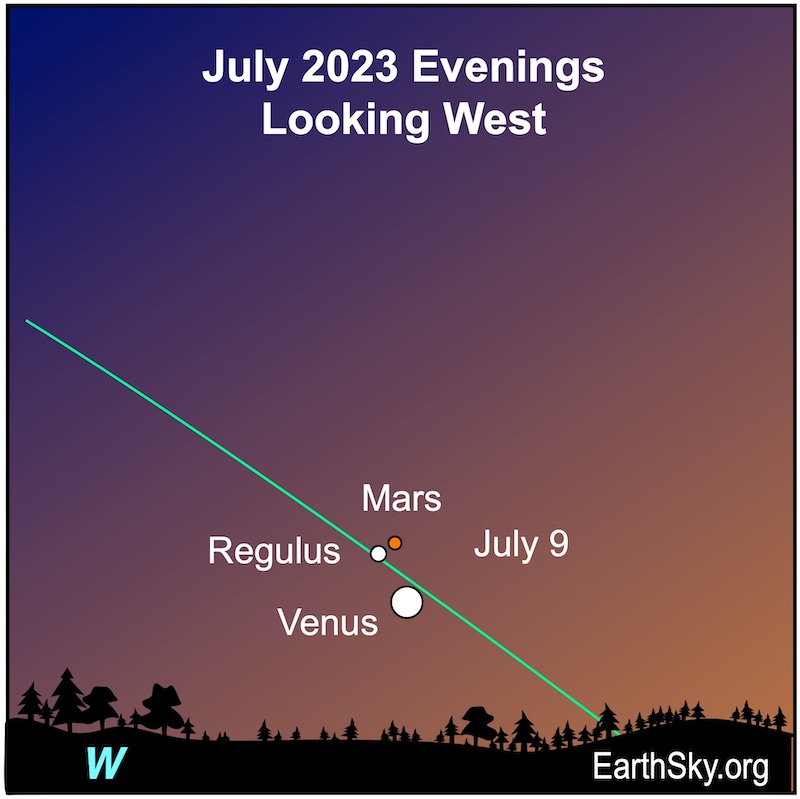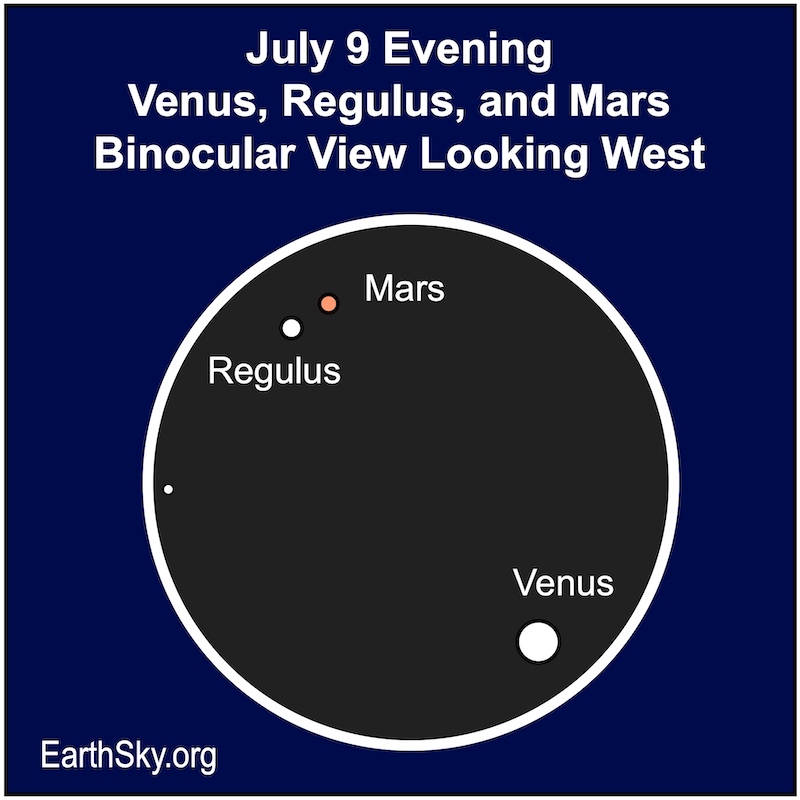Venus, Mars and Regulus trio
Venus is the brightest point of light in the night sky. In the beginning of July, it will be setting in the west less than two hours after sunset. When you look toward the fading colors of sunset, Venus will be the first light you see. The closest planet to Earth shines at magnitude -4.7 in the first half of the month. On July 9, 2023, if you wait for the sky to darken further, you’ll spot two points of light quite close together and above brilliant Venus. The slightly brighter and whiter light is Regulus, brightest star in Leo the Lion. And next to it is reddish Mars. These two worlds appear a bit more than a moon-width apart on both July 9 and 10.

The view in binoculars
To get a better look at this trio, try focusing on them with a pair of binoculars. Through binoculars, you may be able to see the crescent phase of Venus. Next, look for the white and red points of light close together in the same field of view. These are Regulus and Mars, respectively.
Mars should be a steady light, but Regulus might twinkle. That’s because Mars is closer to Earth. A star – such as Regulus – is quite far away, nothing more than a pinprick of light in our sky. So the undulating atmosphere of Earth that we peer through can make the point of Regulus jump around, while the more disk-like Mars stays steady.

Our charts are mostly set for the northern half of Earth. To see a precise view from your location, try Stellarium online.
If you get a great photo of this event, send it to us! Submit your photo to EarthSky Community Photos.
Bottom line: You can see Venus, Mars and Regulus close together on July 9 and 10. Use binoculars to get a better view of the dimmer objects, a little more than a moon-width apart.
For more videos of great night sky events, visit EarthSky’s YouTube page.
For more night sky events visit EarthSky’s visible planets and night sky guide.











